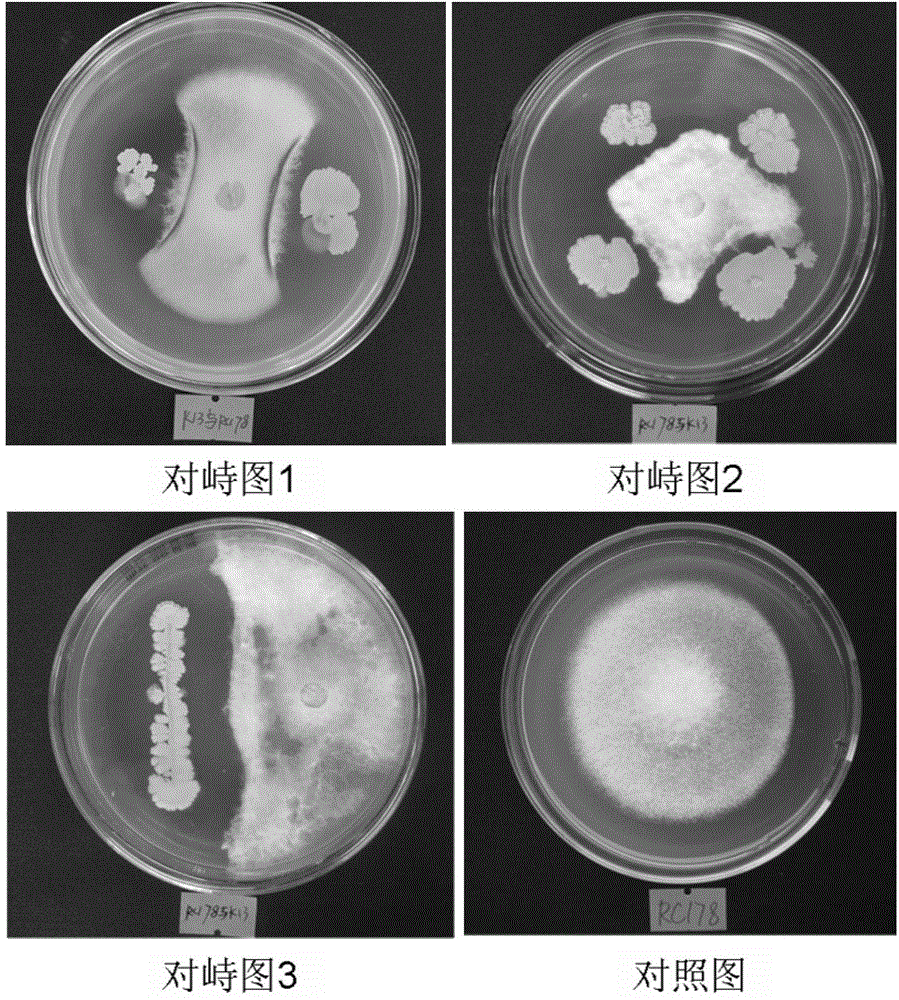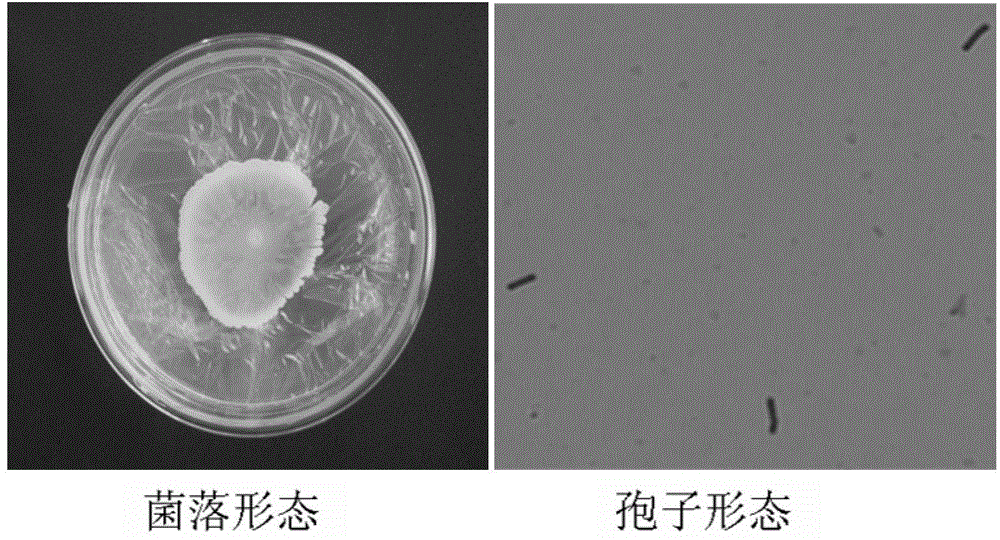Method of isolating and screening antagonistic bacteria from rubber tree leaves
A technology of separation and screening, tree leaves, applied in the field of separation and screening of antagonistic bacteria, can solve the problems that restrict the sustainable development of agriculture, and achieve the effects of controlling the occurrence of diseases, obvious antagonism, and reducing pollution
- Summary
- Abstract
- Description
- Claims
- Application Information
AI Technical Summary
Problems solved by technology
Method used
Image
Examples
Embodiment 1
[0025] The method for isolating and screening antagonistic bacteria from rubber tree leaves specifically comprises the following steps:
[0026] 1 Sampling and collecting rubber susceptible leaves in different areas, putting the collected leaves into plastic bags and recording.
[0027] 2 Surface disinfection of materials and separation of antagonistic bacteria
[0028] 2.1 Rinse with clean water and cut off the diseased leaves. Wash off the dust and grit on the leaves with clean water and dry them. Use scissors to cut small leaves with a size of 5 × 5mm at the junction of disease and health for subsequent use;
[0029] 2.2 Disinfection of samples Put the small diseased leaves clipped into a beaker and soak them in mercuric chloride for 30 seconds. During the soaking process, care should be taken to constantly stir the small diseased leaves, then rinse with sterile water three times, dry and set aside;
[0030] 2.3 Bacteria isolation and culture Use sterilized tweezers to pa...
PUM
 Login to View More
Login to View More Abstract
Description
Claims
Application Information
 Login to View More
Login to View More - R&D
- Intellectual Property
- Life Sciences
- Materials
- Tech Scout
- Unparalleled Data Quality
- Higher Quality Content
- 60% Fewer Hallucinations
Browse by: Latest US Patents, China's latest patents, Technical Efficacy Thesaurus, Application Domain, Technology Topic, Popular Technical Reports.
© 2025 PatSnap. All rights reserved.Legal|Privacy policy|Modern Slavery Act Transparency Statement|Sitemap|About US| Contact US: help@patsnap.com


